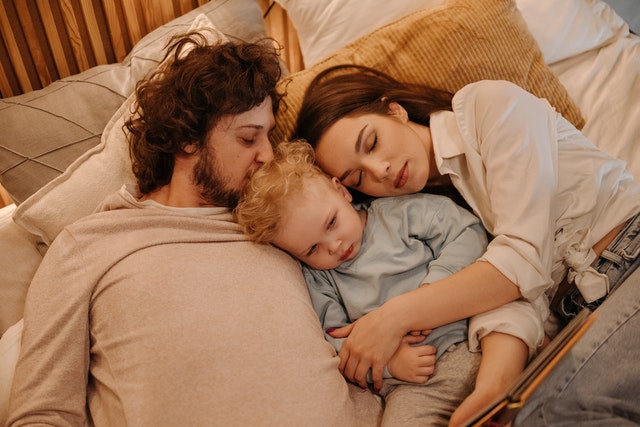Is it difficult for your youngster to fall asleep? Children’s sleep problems include insomnia, bedtime anxiety, night terrors, and bedwetting. In this article, we will be diagnosing sleep issues in kids and how to cure them.
What are sleep disorders?

Sleep disorders are conditions that interfere with or prevent you from receiving a good night’s sleep, which can lead to daytime tiredness and other symptoms. Sleep difficulties are frequent in children and teenagers, and even infants can suffer from them. Poor sleep quality in kids has been linked to a slew of issues, including academic, behavioural, developmental, and social challenges.
How many types of sleep disorders are there?
A total of 80 different types of sleep disorders exists. The following are the most common:
- Childhood Insomnia
- Sleep Apnea
- Hypersomnia
- Delayed Sleep Phase Syndrome
Childhood Insomnia
Childhood insomnia is defined as a child’s inability to fall and stay asleep for at least three days each week. Childhood insomnia can manifest itself as a refusal to go to bed or difficulties falling asleep without the assistance of a parent or an object, such as a favorite toy or blanket.
Delayed Sleep Phase Syndrome
Delayed sleep phase syndrome, often known as “sleepy teen” syndrome, is an exaggerated version of the normal circadian rhythm, or biological clock, a shift that occurs in late childhood.
Children with this illness have trouble falling or staying asleep until two or more hours after their usual bedtime, making it difficult to get up in time for school or other activities in the morning. On weekends, children with delayed sleep phase syndrome tend to sleep considerably later than usual.
Hypersomnia
Hypersomnia is a condition in which a child or adolescent sleeps excessively during the day. Narcolepsy, a neurological illness that causes frequent daytime napping, a transient lack of muscle control, and hallucinations as a kid falls asleep or wakes up, is one condition that can induce hypersomnia.
Hypersomnia can also be caused by other sleep disorders, such as delayed sleep phase syndrome or obstructive sleep apnea. Excessive daytime sleepiness may indicate a concussion, epilepsy, or other medical issues. To determine the appropriate treatment for hypersomnia in children, a thorough diagnosis is required.
Obstructive Sleep Apnea
Obstructive sleep apnea affects a child’s breathing as they sleep. Children with the disorder snore or gasp for air and are frequently awakened during the night. Children with big tonsils or adenoids, as well as those with anatomical issues of the face or head, such as cleft lip and palate, are at risk for obstructive sleep apnea. Children with neuromuscular illnesses such as muscular dystrophy, which impairs the muscles involved in breathing, might develop sleep apnea.
How much sleep do children need?
Children and teenagers require more sleep than adults to perform at their best.
Age group – Recommended sleep time
Infants (4 to 12 months)- 12 to 16 hours (including naps)
Toddlers (1 to 2 years)- 11 to 14 hours (including naps)
Children (3 to 5 years)- 10 to 13 hours (including naps)
Children (6 to 12 years)- 9 to 12 hours
Teens (13 to 18 years)- 8 to 12 hours
Hey welcome to my blog . I am a modern women who love to share any tips on lifestyle, health, travel. Hope you join me in this journey!

Speak Your Mind